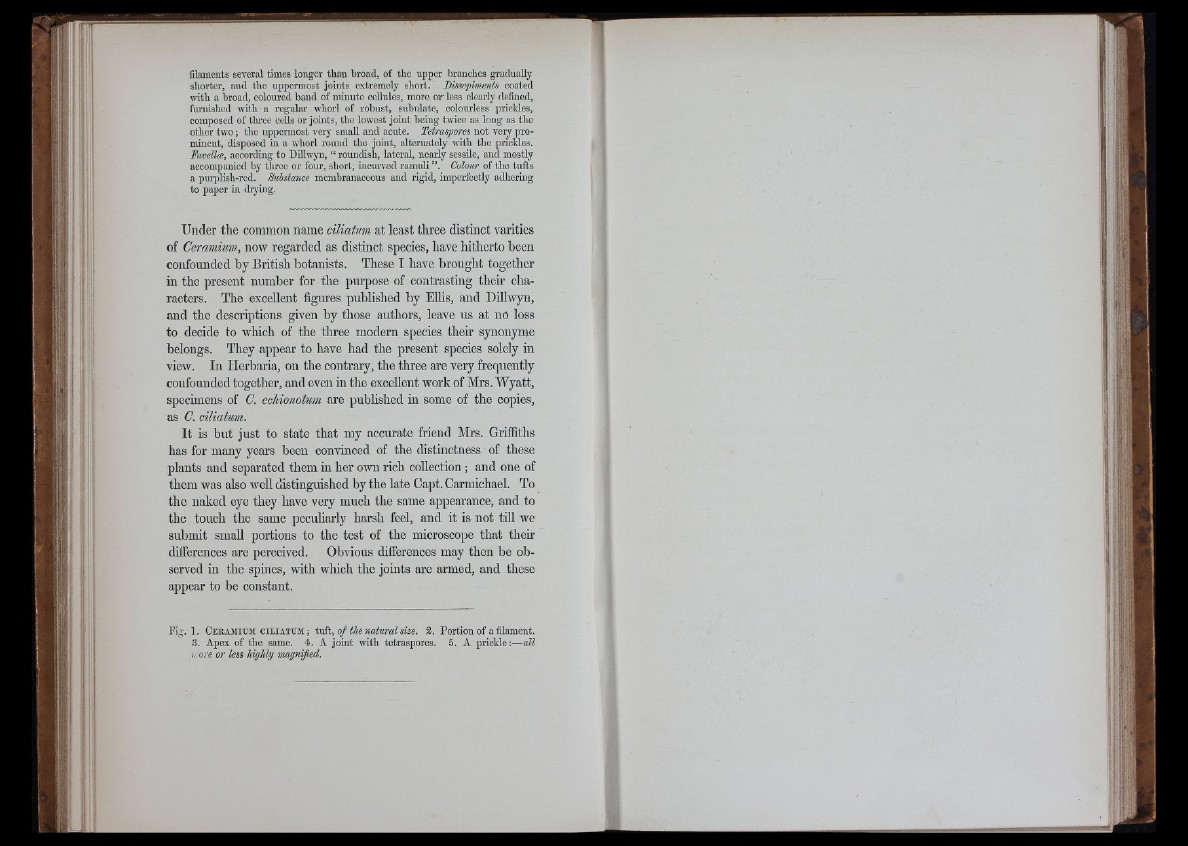
filaments several times longer than broad, of the upper branches gradually
shorter, and the uppermost joints extremely short. Bissepimenis coated
with a broad, coloured hand of minute cellules, more or' less clearly defined,
fm-nished with a regular whorl of robust, subulate, colourless prickles,
composed of tlu’ee cells or joints, the lowest joint being twice as long as the
other two ; the uppermost very small and acute. Tetraspores not very prominent,
disposed in a whorl round the joint, alternately -with the pricMes.
Favellæ, accordmg to Dillwyn, “ roundish, lateral, nearly sessile, and mostly
accompanied by three or fom, short, incuiwed ramuli ” . Colour of the tufts
a purphsh-red. Substance membranaceous and rigid, imperfectly adhering
to paper in drying.
.'I1
î l
Under the common name ciliatum at least three distinct varities
of Ceramiim, now regarded as distinct species, have hitherto been
confounded by British botanists. These I have brought together
in the present number for the pm-pose of contrasting their characters.
The excellent figm*es published by EUis, and Dillwyn,
and the descriptions given by those authors, leave us at no loss
to decide to which of the three modern species their synonyme
belongs. They appear to have had the present species solely in
view. Ill Herbaria, on the contrary, the three are very frequently
confounded together, and even iu the excellent work of Mrs. Wyatt,
specimens of C. echionoium are published in some of the copies,
as C. ciliatum.
It is but just to state that my accurate friend Mrs. Griffiths
has for many years been convinced of the distinctness of these
plants and separated them in her own rich collection; and one of
them was also well distinguished by the late Capt. Carmichael. To
the naked eye they have very much the same appearance, and to
the touch the same peculiarly harsh feel, and it is not till we
submit small portions to the test of the microscope that their
differences are perceived. Obvious differences may then be observed
in the spines, with which the joints are armed, and these
appear to be constant.
Kg. 1. C e e am ium CILIATUM; o f the natural size. 2. Portion of a filament.
3. Apex of the same. 4. A joint with tetraspores. 5. A prickle;—all